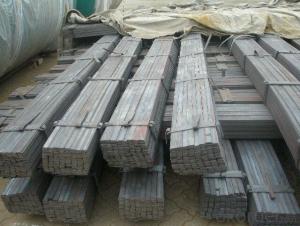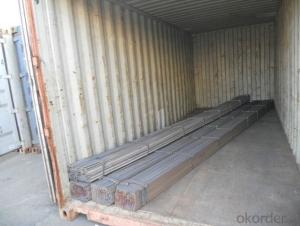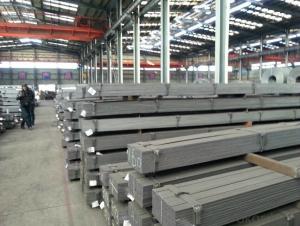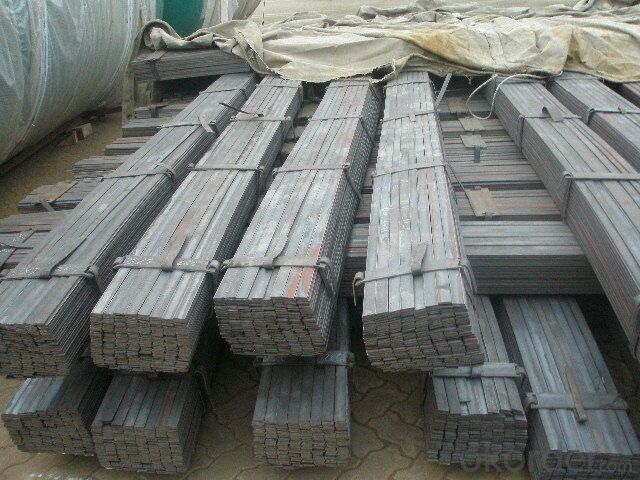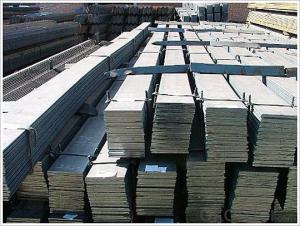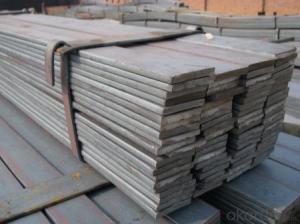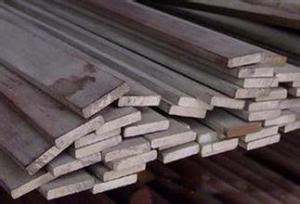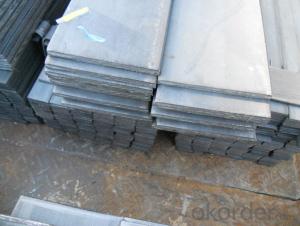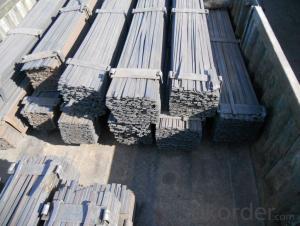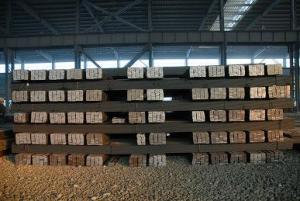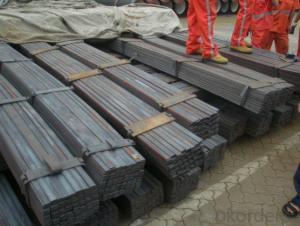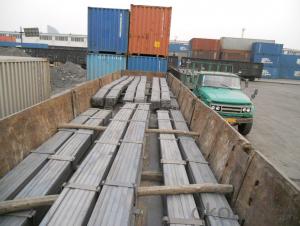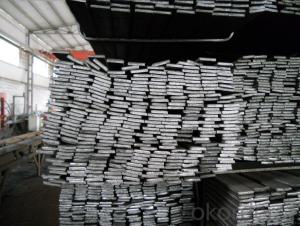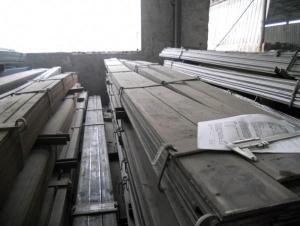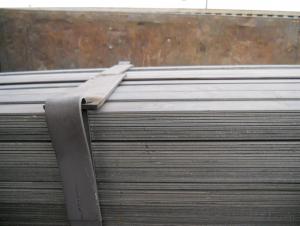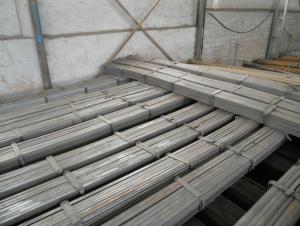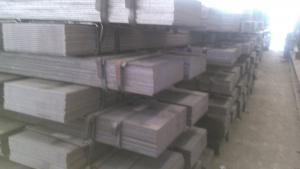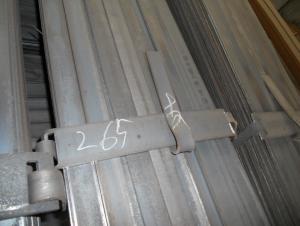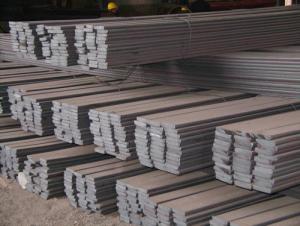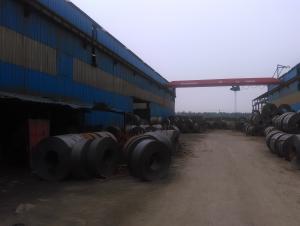Spring Steel Hot Rolled Flat Bar with high quality
- Loading Port:
- Tianjin
- Payment Terms:
- TT or LC
- Min Order Qty:
- 25 m.t
- Supply Capability:
- 12000 m.t/month
OKorder Service Pledge
OKorder Financial Service
You Might Also Like
Specification
Product Description:
OKorder is offering Spring Steel Hot Rolled Flat Bar with high quality at great prices with worldwide shipping. Our supplier is a world-class manufacturer of steel, with our products utilized the world over. OKorder annually supplies products to European, North American and Asian markets. We provide quotations within 24 hours of receiving an inquiry and guarantee competitive prices.
Product Applications:
Spring Steel Hot Rolled Flat Bar with high quality are ideal for structural applications and are widely used in the construction of buildings and bridges, and the manufacturing, petrochemical, and transportation industries.
Product Advantages:
OKorder's Spring Steel Hot Rolled Flat Bar with high quality are durable, strong, and resist corrosion.
Main Product Features:
· Premium quality
· Prompt delivery & seaworthy packing (30 days after receiving deposit)
· Corrosion resistance
· Can be recycled and reused
· Mill test certification
· Professional Service
· Competitive pricing
Product Description:
Specification of Spring Steel Hot Rolled Flat Bar with high quality
Commodity: Mild Steel Flat Bar
Standard: GB;JIS
Material: Q195-235;SS400
Origin place: China
Thickness: 3mm-30mm
Width:20mm-200mm
Length: Max 12m
Certification: SGS/BV
Usage/Applications of Steel Flat Bar
Widely used for construction, Machinery manufacturing, Iron tower steel structure, Shipbuilding; Steel grating, Staircase, Bridge, Viaduct, Railway spare parts, Boilers making etc.
Packaging & Delivery of Mild Steel Flat Bar
Packaging Details: The Mild Steel Flat Bars are packed in bundles and loaded in 20 feet/40 feet container, or shipped by bulk cargo ,also we can do as customer's requirements.
Delivery Details:30~45 days upon the receipt of buyer payment by T.T. or L/C.
Production Flow of Steel Flat Bar
The Mild steel flat bar is made through three processes:
1.Feeding the material: Feeding the row material (the steel plate) to Slitting Line.
2.Slitting:The steel plate would be slitted into expected width by lengthways cutter.
3. Leveled and cutting: The plat bar would be ground into level by the grinder and then cut into required length
FAQ:
Q1: Why buy Materials & Equipment from OKorder.com?
A1: All products offered byOKorder.com are carefully selected from China's most reliable manufacturing enterprises. Through its ISO certifications, OKorder.com adheres to the highest standards and a commitment to supply chain safety and customer satisfaction.
Q2: How do we guarantee the quality of our products?
A2: We have established an advanced quality management system which conducts strict quality tests at every step, from raw materials to the final product. At the same time, we provide extensive follow-up service assurances as required.
Q3: The products are invoicing on theoritical weight or on actual weight?
A3: We can do it in both manners, according to the customers' request.
Image:
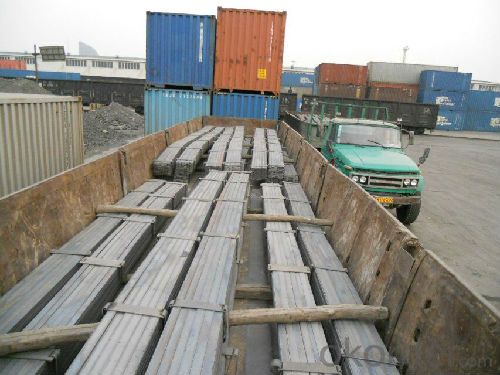
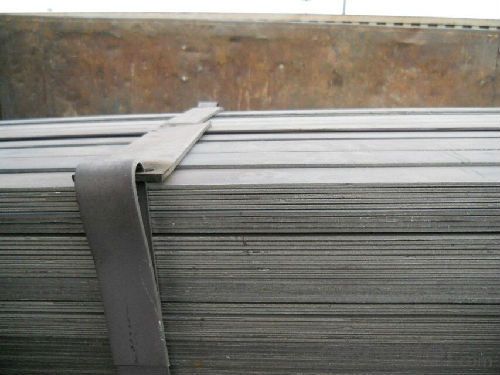
- Q: Are steel flat bars available in standard lengths or custom lengths?
- Steel flat bars are available in both standard lengths and custom lengths. Standard lengths typically range from 6 to 12 feet, depending on the supplier and the specific dimensions of the flat bar. These standard lengths are commonly used in construction, manufacturing, and other industries. However, if you require a flat bar with a specific length that is not available in the standard range, most suppliers offer custom cutting services. This allows you to order steel flat bars in the exact length you need for your specific project or application. Custom lengths can be beneficial when working on unique projects or when you need to minimize waste and optimize material usage.
- Q: How do you protect steel flat bars from UV radiation or sun damage?
- To protect steel flat bars from UV radiation or sun damage, there are several measures that can be taken. Firstly, applying a protective coating on the surface of the steel bars can help shield them from the harmful effects of UV rays. One common option for this is to use a high-quality paint that is specifically formulated for outdoor use. This paint should have UV-resistant properties to prevent fading or discoloration of the steel bars. Another effective method is to use a clear sealant or varnish that contains UV inhibitors. These products create a protective barrier on the surface of the steel, preventing the penetration of UV radiation and minimizing the risk of sun damage. It is advisable to choose a sealant that is designed for use on metal surfaces to ensure maximum effectiveness. In addition to the above measures, it is important to regularly clean and maintain the steel flat bars. This includes removing any dirt, dust, or other debris that may accumulate on the surface, as these can act as magnifiers for UV radiation, intensifying the damage. Regular inspections should also be conducted to identify any signs of corrosion or deterioration, as these can weaken the steel and make it more susceptible to UV damage. Lastly, if the steel flat bars are exposed to direct sunlight for extended periods, it is recommended to provide some form of shade or cover to reduce the intensity of UV exposure. This can be achieved by using awnings, canopies, or other types of protective structures that block or diffuse the sunlight. By implementing these protective measures, the steel flat bars can be safeguarded against UV radiation and sun damage, ensuring their longevity and maintaining their structural integrity.
- Q: How do steel flat bars compare to ceramic flat bars?
- Steel flat bars and ceramic flat bars have different properties and characteristics that make them suitable for different applications. Steel flat bars are known for their strength and durability. They are made from a combination of iron and carbon, which gives them a high tensile strength. This makes steel flat bars ideal for heavy-duty applications that require a lot of strength, such as construction, manufacturing, and automotive industries. Steel flat bars are also resistant to impact, making them less likely to break or crack under pressure. Additionally, steel flat bars can be easily welded and manipulated, allowing for versatility in their usage. On the other hand, ceramic flat bars are known for their heat resistance and low friction properties. Ceramic flat bars are made from non-metallic materials, such as clay or porcelain, that are fired at high temperatures. This makes them excellent for applications that require resistance to high temperatures, such as furnace linings or kiln furniture. Ceramic flat bars also have low friction properties, making them suitable for applications where reducing friction is essential, such as in bearings or cutting tools. In terms of appearance, steel flat bars have a metallic and industrial look, while ceramic flat bars have a more refined and elegant appearance. This aesthetic difference may be a factor in choosing between the two types of flat bars, depending on the desired visual impact of the application. In summary, steel flat bars are favored for their strength, durability, and versatility, making them suitable for heavy-duty applications. Ceramic flat bars, on the other hand, are valued for their heat resistance and low friction properties, making them ideal for applications where these characteristics are required. The choice between steel and ceramic flat bars ultimately depends on the specific needs and requirements of the application at hand.
- Q: Are steel flat bars suitable for making industrial machinery or equipment?
- Yes, steel flat bars are suitable for making industrial machinery or equipment. Steel is known for its strength, durability, and versatility, making it an ideal material for manufacturing in various industries. Steel flat bars are commonly used in the construction of industrial machinery and equipment due to their stability and load-bearing capacity. They can be easily cut, shaped, and welded to create different components and structures required in machinery manufacturing. Additionally, steel flat bars are resistant to corrosion, which is crucial in industrial environments where machinery may be exposed to harsh conditions. Overall, steel flat bars provide the necessary strength and reliability needed for manufacturing industrial machinery and equipment.
- Q: Are steel flat bars commonly used in the renewable energy sector?
- Yes, steel flat bars are commonly used in the renewable energy sector. They are often used for various applications such as structural support, framing, and mounting systems for solar panels and wind turbines. Steel flat bars are valued for their strength, durability, and versatility, making them an ideal choice for renewable energy infrastructure projects.
- Q: What are the common factors affecting the price of steel flat bars?
- The price of steel flat bars can be influenced by several factors that are commonly observed. 1. Raw material costs have a significant impact on the price of steel flat bars. The prices of raw materials like iron ore, coal, and scrap metal can fluctuate, leading to changes in the overall cost of production and, consequently, the price of steel flat bars. 2. The dynamics of supply and demand play a crucial role in determining the price of steel flat bars, just like any other commodity. If the demand for steel flat bars is high and the supply is limited, the price is likely to increase. Conversely, if the supply exceeds the demand, prices may decrease. 3. The price of steel flat bars can also be affected by the costs associated with manufacturing and processing. These costs include labor, energy, transportation, and other production-related expenses. Any changes in these costs, such as increased wages or electricity prices, can impact the final price of steel flat bars. 4. Market competition within the steel industry can influence the price of steel flat bars. When there are numerous suppliers offering similar products, the market becomes more competitive, leading to lower prices. Conversely, if there are fewer competitors, prices may increase. 5. Government regulations and trade policies, such as import tariffs or quotas, can significantly impact the price of steel flat bars. These policies can either restrict or promote the import and export of steel, which can affect the overall supply and demand dynamics and subsequently influence prices. 6. The price of steel flat bars can also be influenced by the overall economic conditions. During periods of economic growth and high construction activity, the demand for steel flat bars tends to increase, resulting in higher prices. Conversely, during economic downturns or recessions, demand may decrease, leading to lower prices. It is important to note that the combination of these factors can vary depending on the specific market and region. Additionally, external factors such as natural disasters, geopolitical events, and currency exchange rates can also impact the price of steel flat bars.
- Q: Are steel flat bars used in the automotive industry?
- Yes, steel flat bars are commonly used in the automotive industry. They are primarily used in various applications such as chassis frames, suspension components, seat frames, and door reinforcements. Steel flat bars offer several advantages in automotive manufacturing, including high strength, durability, and cost-effectiveness. Their versatility and ability to be easily formed and welded make them an ideal choice for many automotive structural and non-structural parts. Additionally, steel flat bars offer excellent resistance to impact and fatigue, ensuring the safety and longevity of vehicles.
- Q: What is the maximum load that steel flat bars can support?
- The maximum load that steel flat bars can support depends on various factors such as the dimensions of the bar, the type and grade of steel used, and the method of support. Therefore, it is difficult to provide a specific answer without more details.
- Q: How do steel flat bars compare to brass flat bars?
- Different applications require the use of steel flat bars and brass flat bars because they possess distinct characteristics and properties. Steel flat bars are renowned for their exceptional strength and durability. They are typically crafted from carbon steel, which grants them high tensile strength and the ability to endure heavy loads and impacts. Furthermore, steel flat bars exhibit resistance against rust and corrosion, rendering them suitable for outdoor or industrial purposes. They find common employment in construction, manufacturing, and engineering ventures that necessitate structural support and reinforcement. On the contrary, brass flat bars offer unique benefits owing to their composition. Brass, an alloy of copper and zinc, presents a distinct golden hue and a high level of malleability. Brass flat bars are recognized for their excellent conductivity and are thus well-suited for electrical and plumbing applications. They frequently contribute to the production of electrical connectors, fittings, and ornamental elements. Additionally, brass possesses antimicrobial properties, making it a favored option when hygiene is of utmost importance, such as in hospitals or food processing facilities. Regarding cost, steel flat bars are generally more economical than brass flat bars. Steel is abundantly available and less expensive, while brass is deemed a specialized metal that necessitates additional processing and refinement. In conclusion, the choice between steel and brass flat bars hinges on the specific requirements of the project. If paramount considerations include strength, durability, and resistance to rust, steel flat bars represent the preferable selection. Conversely, if electrical conductivity, malleability, and antimicrobial properties hold significance, brass flat bars emerge as the superior option.
- Q: Can steel flat bars be used for structural purposes?
- Yes, steel flat bars can be used for structural purposes. They are commonly used in construction projects for various applications such as support beams, braces, and framework due to their strength and durability.
Send your message to us
Spring Steel Hot Rolled Flat Bar with high quality
- Loading Port:
- Tianjin
- Payment Terms:
- TT or LC
- Min Order Qty:
- 25 m.t
- Supply Capability:
- 12000 m.t/month
OKorder Service Pledge
OKorder Financial Service
Similar products
Hot products
Hot Searches
Related keywords
